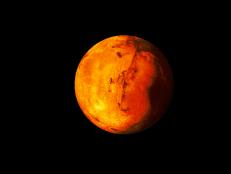SPACE OUT with Paul M. Sutter
All SPACE OUT Articles
Showing 91 - 105 of 153 results
The 5 Greatest Robotic Space Explorers
Our little silicon friends have been exploring the harshest environments in the universe - space itself - in humanity’s name for decades. And while tales of their robotic exploits could fill an entire book, let’s count down the top five.
Mars is Getting International
Things are getting a little crowded at the red planet.
Are Aliens Calling Us From Proxima Centauri?
The internet and news media alike are abuzz with news about a radio buzz coming from Proxima Centauri, the nearest neighbor star to our sun a mere four and a quarter light-years away. That star happens to host a planet, called Proxima b (because we don’t have a cooler name for it yet), that sits in the habitable zone of its parent star. That means that the planet can potentially host liquid water, and where there’s liquid water there’s a chance for life.
What Do Pulsar Waves Tell Us About the Universe?
Using a network of dead stars, astronomers get closer to seeing the background ripples of the universe.
NASA’s Giant Rocket Test Fails (Sort Of)
It was all supposed to be great. On January 16th, NASA performed its first major test run in a long, long time. It was a test for the core stage of its upcoming Space Launch System (SLS), a beast of a rocket that will carry astronauts to the Moon, Mars, and more.
The Case of the Missing Black Hole
You would think that objects weighing billions of times the mass of the sun would be easy to find. Alas, it’s rarely that simple.
It’s Time to Say Goodbye to Arecibo
There aren’t a lot of telescopes that are also movie stars. In fact, I can think of only one: the famed Arecibo Observatory in Puerto Rico.
Say Hello to a Planet So Hot that the Oceans are Lava and it Rains Rocks
Exoplanets are planets orbiting stars outside the solar system, and every month seems to bring in a new batch of weird, wild, and wonderful worlds.
Virgin Galactic Failed to Launch because Space is Hard
This is the first test launch from Branson’s Virgin Galactic company since February of 2019, and follows a string of delays, cancellations, and aborts. What’s going on?
The Wow Signal: No, It Wasn’t Aliens
On a typical muggy midwestern August evening in 1977, astronomers at the Ohio State University’s Big Ear radio telescope got a big surprise. It was a signal so loud that it could only be described with one word: “wow!”
Want the Ultimate Off-the-Grid Challenge? Try Mars
Mars is the ultimate off-the-grid experience--far grittier, far harder, and far… redder than even the most remote locations on planet Earth. Let’s break down some of the challenges that people will have to face in order to survive and thrive on our neighbor in the solar system.
Who’s Going to Pick Up All the Space Trash?
We all know we’re not supposed to litter, right? It’s gross and harms the environment. But somebody forgot to tell all the space agencies that have been launching rockets into Earth orbit for well over half a century now – and leaving their space junk all over the place.
Life on Venus… Maybe Not So Lively
All planets with evidence of life please take a step forward. Not so fast, Venus.
How Stars Die: The Fate of a Hypernova
All Stars die. Some stars go out with a bang. Some stars go out with a big bang — a supernova. And some stars are capable of something so spectacular, so rare, we don't even have a name for it yet.
The Death of Black Holes
According to NASA, "A black hole is a place in space where gravity pulls so much that even light can not get out. The gravity is so strong because matter has been squeezed into a tiny space. This can happen when a star is dying." But what happens when a black hole dies?


























